Inside the Titan Supercomputer: 299K AMD x86 Cores and 18.6K NVIDIA GPUs
by Anand Lal Shimpi on October 31, 2012 1:28 AM EST- Posted in
- CPUs
- IT Computing
- Cloud Computing
- HPC
- GPUs
- NVIDIA
Introduction
Earlier this month I drove out to Oak Ridge, Tennessee to pay a visit to the Oak Ridge National Laboratory (ORNL). I'd never been to a national lab before, but my ORNL visit was for a very specific purpose: to witness the final installation of the Titan supercomputer.
ORNL is a US Department of Energy laboratory that's managed by UT-Battelle. Oak Ridge has a core competency in computational science, making it not only unique among all DoE labs but also making it perfect for a big supercomputer.
Titan is the latest supercomputer to be deployed at Oak Ridge, although it's technically a significant upgrade rather than a brand new installation. Jaguar, the supercomputer being upgraded, featured 18,688 compute nodes - each with a 12-core AMD Opteron CPU. Titan takes the Jaguar base, maintaining the same number of compute nodes, but moves to 16-core Opteron CPUs paired with an NVIDIA Kepler K20X GPU per node. The result is 18,688 CPUs and 18,688 GPUs, all networked together to make a supercomputer that should be capable of landing at or near the top of the TOP500 list.
We won't know Titan's final position on the list until the SC12 conference in the middle of November (position is determined by the system's performance in Linpack), but the recipe for performance is all there. At this point, its position on the TOP500 is dependent on software tuning and how reliable the newly deployed system has been.
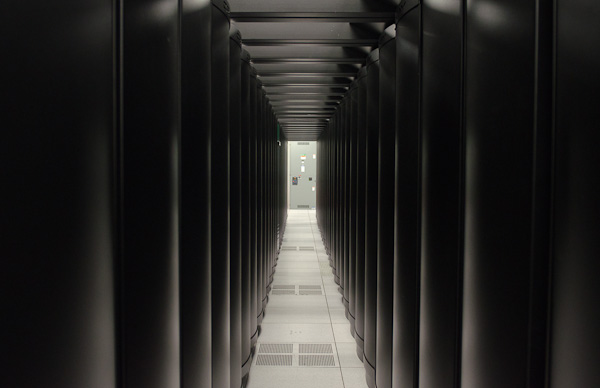
Rows upon rows of cabinets make up the Titan supercomputer
Over the course of a day in Oak Ridge I got a look at everything from how Titan was built to the types of applications that are run on the supercomputer. Having seen a lot of impressive technology demonstrations over the years, I have to say that my experience at Oak Ridge with Titan is probably one of the best. Normally I cover compute as it applies to making things look cooler or faster on consumer devices. I may even dabble in talking about how better computers enable more efficient datacenters (though that's more Johan's beat). But it's very rare that I get to look at the application of computing to better understanding life, the world and universe around us. It's meaningful, impactful compute.
The Hardware
In the 15+ years I've been writing about technology, I've never actually covered a supercomputer. I'd never actually seen one until my ORNL visit. I have to say, the first time you see a supercomputer it's a bit anticlimactic. If you've ever toured a modern datacenter, it doesn't look all that different.
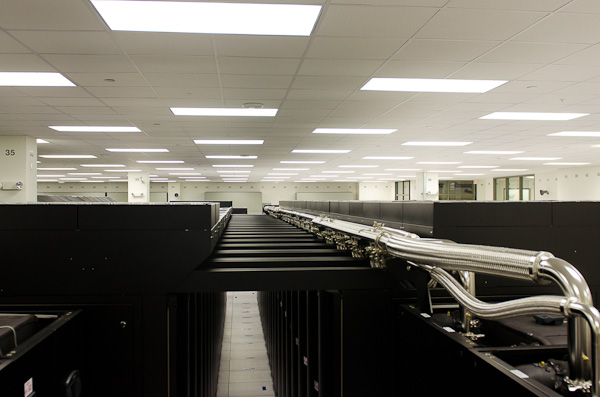
More Titan, the metal pipes carry coolant
Titan in particular is built from 200 custom 19-inch cabinets. These cabinets may look like standard 19-inch x 42RU datacenter racks, but what's inside is quite custom. All of the cabinets that make up Titan requires a room that's about the size of a basketball court.
The hardware comes from Cray. The Titan installation uses Cray's new XK7 cabinets, but it's up to the customer to connect together however many they want.
ORNL is actually no different than any other compute consumer: its supercomputers are upgraded on a regular basis to keep them from being obsolete. The pressures are even greater for supercomputers to stay up to date, after a period of time it actually costs more to run an older supercomputer than it would to upgrade the machine. Like modern datacenters, supercomputers are entirely power limited. Titan in particular will consume around 9 megawatts of power when fully loaded.
The upgrade cycle for a modern supercomputer is around 4 years. Titan's predecessor, Jaguar, was first installed back in 2005 but regularly upgraded over the years. Whenever these supercomputers are upgraded, old hardware is traded back in to Cray and a credit is issued. Although Titan reuses much of the same cabinetry and interconnects as Jaguar, the name change felt appropriate given the significant departure in architecture. The Titan supercomputer makes use of both CPUs and GPUs for compute. Whereas the latest version of Jaguar featured 18,688 12-core AMD Opteron processors, Titan keeps the total number of compute nodes the same (18,688) but moves to 16-core AMD Opteron 6274 CPUs. What makes the Titan move so significant however is that each 16-core Opteron is paired with an NVIDIA K20X (Kepler GK110) GPU.
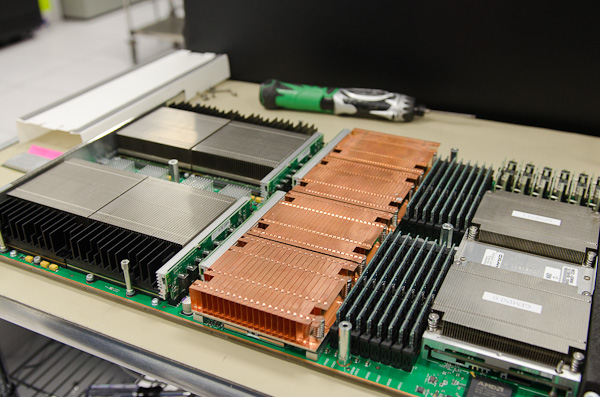
A Titan compute board: 4 AMD Opteron (16-core CPUs) + 4 NVIDIA Tesla K20X GPUs
The transistor count alone is staggering. Each 16-core Opteron is made up of two 8-core die on a single chip, totaling 2.4B transistors built using GlobalFoundries' 32nm process. Just in CPU transistors alone, that works out to be 44.85 trillion transistors for Titan. Now let's talk GPUs.
NVIDIA's K20X is the server/HPC version of GK110, a part that never had a need to go to battle in the consumer space. The K20X features 2688 CUDA cores, totaling 7.1 billion transistors per GPU built using TSMC's 28nm process. With a 1:1 ratio of CPUs and GPUs, Titan adds another 132.68 trillion transistors to the bucket bringing the total transistor count up to over 177 trillion transistors - for a single supercomputer.
I often use Moore's Law to give me a rough idea of when desktop compute performance will make its way into notebooks and then tablets and smartphones. With Titan, I can't even begin to connect the dots. There's just a ton of computing horsepower available in this installation.
Transistor counts are impressive enough, but when you do the math on the number of cores it's even more insane. Titan has a total of 299,008 AMD Opteron cores. ORNL doesn't break down the number of GPU cores but if I did the math correctly we're talking about over 50 million FP32 CUDA cores. The total computational power of Titan is expected to be north of 20 petaflops.
Each compute node (CPU + GPU) features 32GB of DDR3 memory for the CPU and a dedicated 6GB of GDDR5 (ECC enabled) for the K20X GPU. Do the math and that works out to be 710TB of memory.
System storage is equally impressive: there's a total of 10 petabytes of storage in Titan. The underlying storage hardware isn't all that interesting - ORNL uses 10,000 standard 1TB 7200 RPM 2.5" hard drives. The IO subsystem is capable of pushing around 240GB/s of data. ORNL is considering including some elements of solid state storage in future upgrades to Titan, but for its present needs there is no more cost effective solution for IO than a bunch of hard drives. The next round of upgrades will take Titan to around 20 - 30PB of storage, at peak transfer speeds of 1TB/s.
Most workloads on Titan will be run remotely, so network connectivity is just as important as compute. There are dozens of 10GbE links inbound to the machine. Titan is also linked to the DoE's Energy Sciences Network (ESNET) 100Gbps backbone.


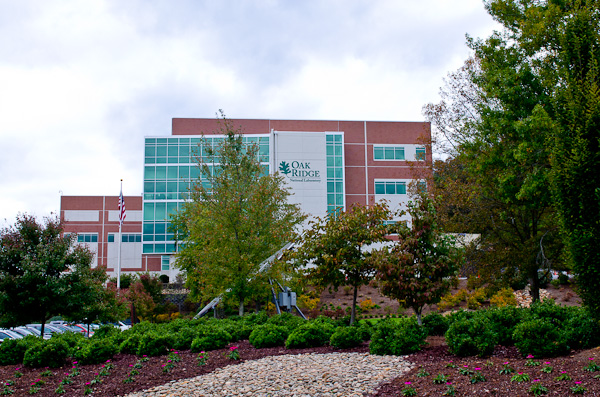






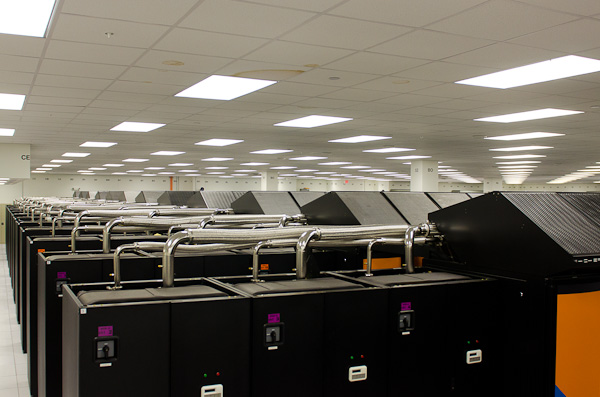
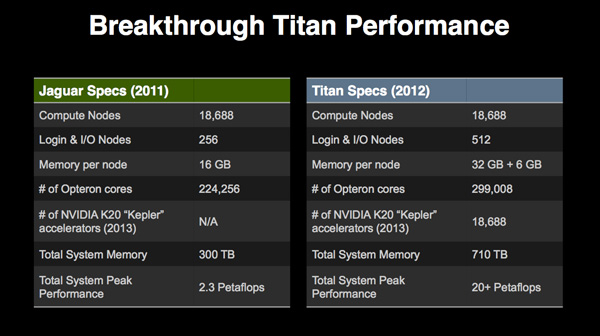
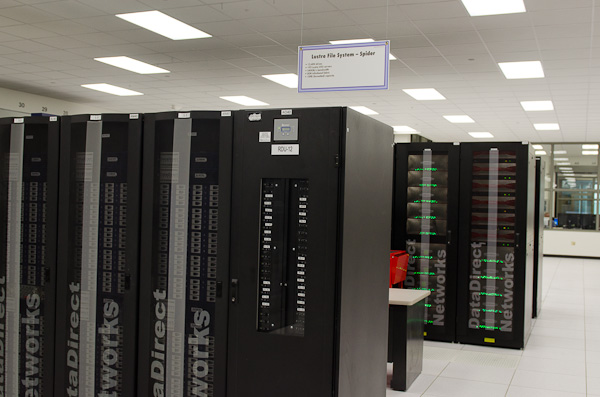
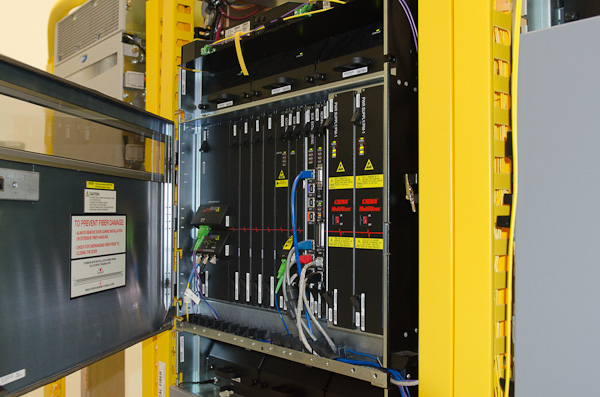








130 Comments
View All Comments
karasaj - Wednesday, October 31, 2012 - link
We should see what kinds of frames we get :)(Yes you'd have single threaded cpu bottleneck, but I can dream)
N4g4rok - Wednesday, October 31, 2012 - link
I bet that microstutter's a bastard though.Alexvrb - Saturday, November 3, 2012 - link
Put it in AFR mode! :Phansmuff - Sunday, November 4, 2012 - link
Hmm, with this kind of power, just render ALL POSSIBLE frames ahead for a full second, and just flip the display to the framebuffer that corresponds to the gameplay :)Rookierookie - Wednesday, October 31, 2012 - link
Yes, but can it run Crysis?SilthDraeth - Wednesday, October 31, 2012 - link
Wrong question. The correct question is;Will it blend?
losttsol - Wednesday, October 31, 2012 - link
Yes it can, as long as Crysis isn't running on top of Windows Vista.inighthawki - Wednesday, October 31, 2012 - link
What does Vista have to do with this?RussianSensation - Wednesday, October 31, 2012 - link
Over 9000 fps!Good to see GPUs gaining traction outside of videogames, paving way for their use as a general purpose devices that can benefit a wide variety of usage patterns outside of games :) Hopefully the profits from these will mean even better GPUs for us gamers down the line.
CeriseCogburn - Saturday, November 10, 2012 - link
You mean nVidia GPU's gaining traction, and far outperforming amd cores.